Venice used to be famous for cats, but they have somehow relinquished their mythic stature. When I came to Venice back in 1804, there were still scattered outposts where old ladies would leave food for the stray cats, near makeshift little huts. Now the only place I can be sure of seeing a feline is either roaming the cloister at the city hospital, or on or near a few windowsills in the neighborhood. The once-abundant freelancing cats have been rounded up and stowed in a pound on the Lido.
Instead of cats, there are dogs.
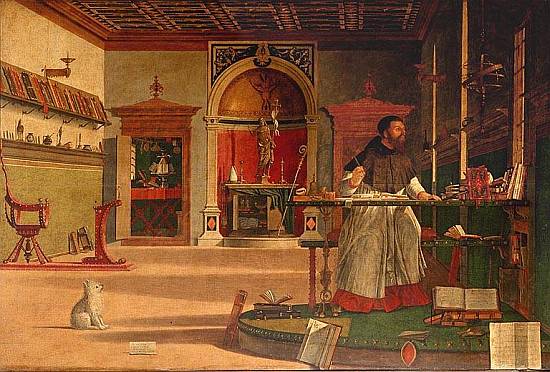
When Lino was a lad, families were still large and didn’t have extra food to waste on a dog just to play with. The only dogs who were given room and board had to work for it, like retrievers or hounds. No need for a guard dog, that’s what grandmothers are for. Or, as Lino put it, “What was there for a dog to guard? Most people didn’t even have tears to cry with.”
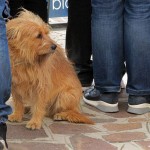
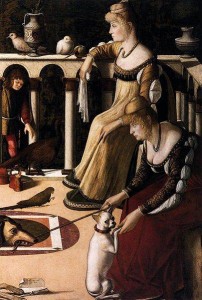
I amuse myself by tracking the changing fashions in the world of Fido and Rex (though here people tend to like the name Bobi). Like other fashions, it’s hard to discover a reason for it, but evidently either you can get tired of a dog faster than your nose-ring or skateboard, or you just really need to be like everybody else. Or you didn’t care about your dog in the first place.
First, there were Afghan hounds. It seems strange now, but this is true. Then all of a sudden everybody had boxers. They traded these in for beagles. Then came a rash of Jack Russell terriers. Now that I think of it, it’s been a while since I saw a beagle — they used to be everywhere. And the Jack Russells are mysteriously fading away too.
Now we have a mixed bag, with a few of the above (not the Afghans, those are long gone), joined by a few French bulldogs, an English bulldog, a couple of Rottweilers, Golden Retrievers, Labradors, a batch of Shih Tzus, assorted terriers, and a smattering of spaniels of various sorts. There are also plenty of mutts, I’m glad to note. They never go out of style.
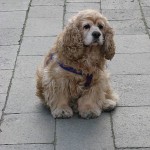
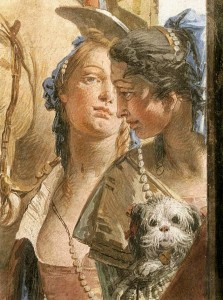
This passion for dogs is far from being some new aberration, at least according to centuries of Venetian art. It’s pretty clear that the patricians have always been dog-crazy. Look at any number of Venetian paintings, even at random, and you’ll see that where two or more are gathered together, there will be at least one dog.
When I go to a museum or church or palace here, I don’t admire the brushwork or the color scheme, I play Find the Dog. It’s a very satisfying game because you know there is at least one, and often more. It’s like a treasure hunt.
Someone might tell me that the dogs are there in their purely symbolic capacity, like other animals in European art such as peacocks or bees. Dogs, as we all know, typically represent fidelity, obedience, protection, courage and vigilance. All excellent traits which would be valued here, as anywhere. Scholarly sources don’t mention its symbolizing sweetness but they are obviously not well informed.
But by the way most dogs are depicted, they don’t seem symbolic at all. Most of them have got more personality than many of the people around them — just like now.
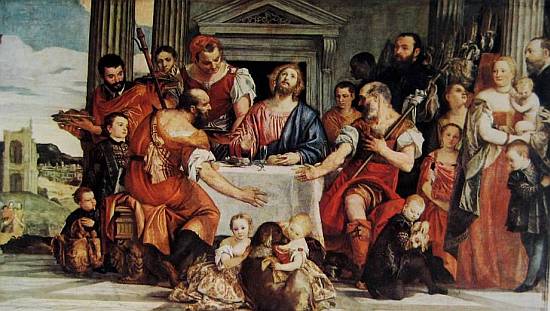
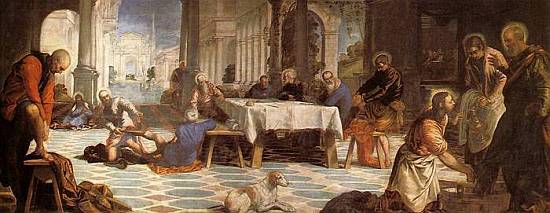
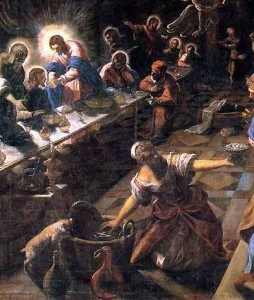
What started me on all these ruminations is the fact that, for however much the dog might be adored here, it remains the quintessential insult-figure. “I cani di ta morti” (your beloved deceased family members are dogs) is absolutely the worst thing you can say to a person here, so bad that you don’t say it unless you intend to make that person your enemy forever.
This is occasionally modified to “ti ta morti,” which I think means that you have left a small window open for future reconciliation. Or at least haven’t branded yourself as irredeemably vulgar.
You can substitute “porceli” (pigs) for dogs, which is the only way you can make the insult worse.
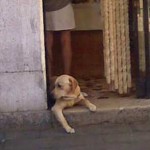
You don’t have to say it to the person, you can also merely say it about the person. “Why did your boss make you work last Sunday?” “Because she’s got morti cani.” If the situation warrants it but I don’t want to utter the death blow, I soften it by merely referring to the person and his or her behavior as having or being M.C. In any form, it’s such a useful expression that I wish there were a corresponding phrase in English, but I haven’t found it, or managed to invent it, yet.

I will have to pursue further research on the subject of insults because I am under the impression that the main force of the phrase doesn’t come from the dogs, but the fact that the insult is aimed at your family. In Rome, the corresponding vilification is “i mortacci tua” — again, an imprecation against your dead relatives.
Your typical insulting Anglo-Saxon doesn’t tend to invoke either death (unless it’s yours) or your relatives (unless it’s your mama). Therefore death and your family status appear to carry a freight of meaning here which must come from some extremely deep Mediterranean source. Perhaps the Phoenicians devised it, along with the alphabet.
I sometimes wonder what dogs say about each other. “Your dead relatives are humans,” probably.
Stay on the safe side and don’t ever refer to dogs or people in the same sentence. Especially not if you observe how much the animal and its owner resemble each other.
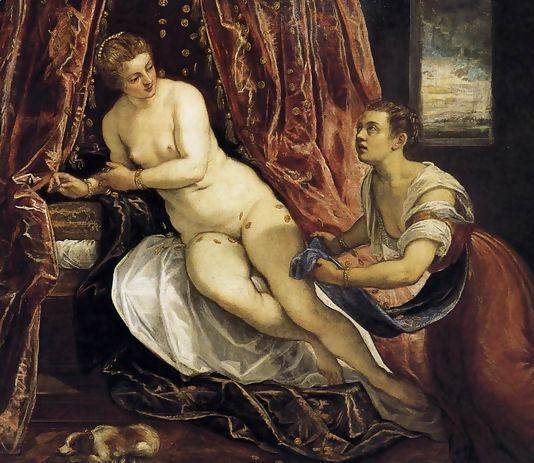
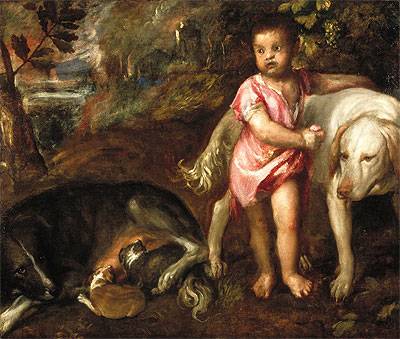
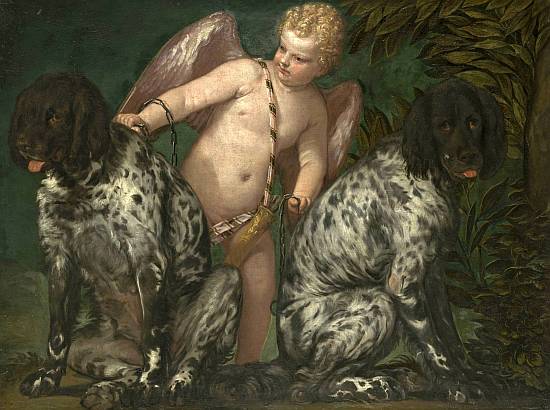

13 Comments
Dang. I just said aloud “i cani di ta morti” as I was reading through this post and my Venetian husband flew off the couch on the other side of the living room, electrified, shouting “WHAT DID YOU SAY???!! Where did you learn THAT!!??!!” What a reaction! Priceless. But perhaps I won’t try this one out on the in-laws. Thank you for another enjoyable lesson on Venetian life, language and assorted oddities….
I’m impressed that your Venetian husband has never said this. He clearly has phenomenal self-control and breeding, and you travel in very elegant circles. In ErlaWorld people say it all the time.
I believe the lesser amount of stray cats in Venice over the last 20 years has partly been due to a voluntary organization’s efforts at steriilzation of strays along with care of seriously ill cats. In a word, a bit more than just tossing them on the Lido.
Undoubtedly true. Thank you for this new piece of information. Sorry if I gave the impression they had been “tossed” — they are, as far as I know, very well cared for in their facility on the Lido. I merely note that they did not go there of their own accord, which as you may know, is totally against the entire feline view of correct behavior.
I must remember not to be eating or drinking when I read your blogs posts.
As I read this, with a piece of bruschetta in my mouth, “I sometimes wonder what dogs say about each other. ”Your dead relatives are humans,” probably.”, I nearly choked, as I drew in a deep breath, the better to guffaw.
You are a health hazard. But, a lovable health hazard.
Thank you! I think… Inspiring a guffaw from you is, in fact, one of my purposes in life!
Over the 10 years we’ve been visiting the increase in dogs- and changing fashion in said pooches and their attire – has been an annual point of much discussion.
We were amazed one year when a pair of Newfoundland’s and a couple of St Bernards were regularly seen near our apartment, so apparently resident not visiting. Just where do you put a dog of that size in an apartment?
I once saw a Great Dane, which inspired a powerful desire to buy a small donkey. They would be at least the same size, and I could use the donkey to carry the heavy bags of shopping, luggage, etc. I suppose a Great Dane could be fixed up with a travois, but a donkey would be so much cooler. Lino says there are laws against keeping farm animals in the city (he should know, because when he was a lad there was a man who sold live chickens near his house). But I think that’s unreasonable because the donkey would be smaller than the dog, and more useful. Back to your question: Evidently they have a larger apartment than you or I do, or they sleep somewhere else.
Astonishing!! I have never paid attention about dogs on this gerat pictures..it is really amazing ,,,there are a lot of things to learn from your posts!! tnx!! cheers
Thanks back! You’ve just given me a wonderful boost!
Clearly there should be more dogs in my novel. I must have been too busy noticing other things in those pictures not to have figured out that several of my 16th c. characters would have at least one dog around. See, I should check this stuff with your blog before I write a chapter.
I noticed the Golden Retrievers on my last visit. I used to have one of these playful water dogs. Get Sandy within sight of any amount of water, and she would be in it–be it ever so cold, deep or choppy. So when I saw one ambling along the fondamenta, all I could think was, “How on earth do they keep that dog DRY?”
Dogs can help in putting us at ease when we are losing our temper. Always show what is good and never hit them with anything or something. Dogs are our pets, but we can’t force them or to keep them around with us if they can’t. Dog are like humans. They have natural feelings as we humans have. This inspiring thought you wrote will inspire lots of people on how dogs can be important to us.